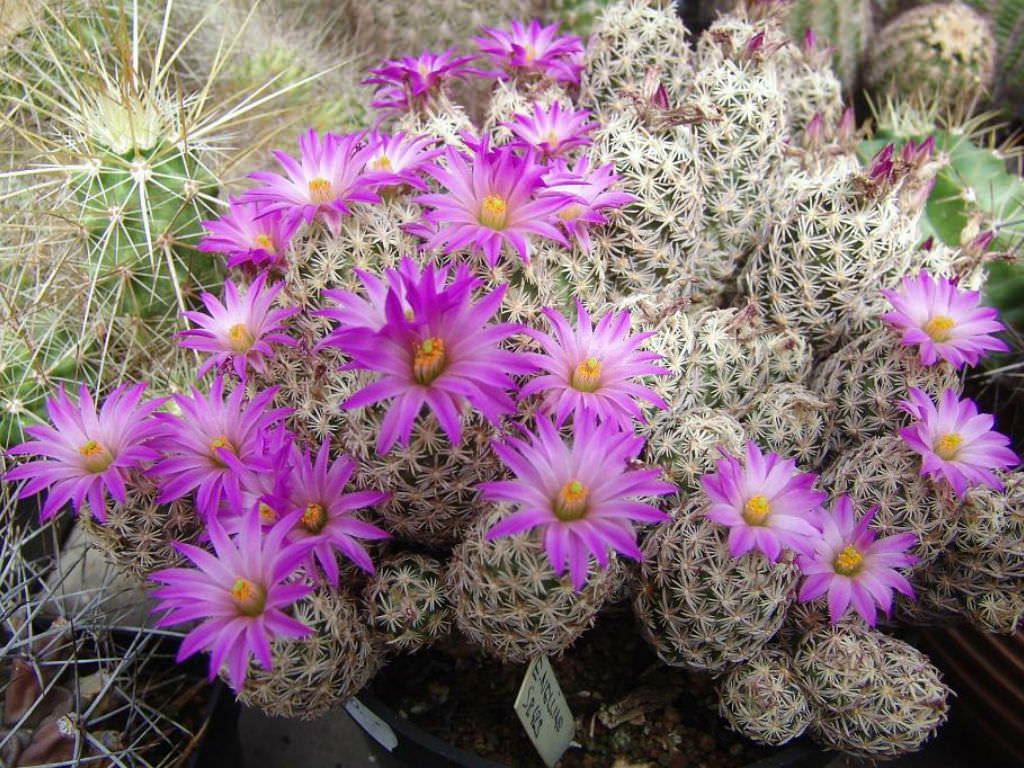In the world of cacti, few plants are as fascinating as the Escobaria. Known for their unique adaptations and distinctive aesthetics, these cacti pose infinite curiosities for enthusiasts and casual gardeners alike. Have you ever looked at a cactus and wondered how it survives in such harsh environments? Escobaria, with its intricate floral displays and resilience, symbolizes nature’s perseverance and beauty in arid landscapes.
As you dive into the enchanting realm of Escobaria, you may face the challenge of understanding their specific growing requirements. This guide serves to demystify the nuances of growing and caring for Escobaria. Let’s explore the biological intricacies, ideal environments, and cultivation techniques to ensure these delightful cacti thrive.
Understanding Escobaria: Biophysical Characteristics
Escobaria, a genus belonging to the Cactaceae family, primarily inhabits the arid expanses of North America, particularly in regions such as the United States and Mexico. With over twenty recognized species, Escobaria showcases an impressive variety of forms, characteristics, and growth habits.
The cacti are generally characterized by their small, cylindrical to globular shapes adorned with numerous spines. While many people visualize cacti as large, imposing figures, Escobaria offers a different approach. These diminutive wonders rarely exceed a foot in height, making them delightful additions to any succulent collection.
The most notable trait of Escobaria is its stunning array of blooming flowers that sprout during the late spring to early summer. The blooms occur in vibrant hues ranging from pure white to vivid pink, enticing pollinators and adding an exuberant splash of color to your garden or indoor space. Furthermore, these flowers usually emerge from the top of the plant, bringing a touch of elegance to its overall structure.
Natural Habitat: Where and How Escobaria Grows
Escobaria’s growth patterns are intricately linked to their native habitats. Most species thrive in areas characterized by well-draining soils, rocky substrates, and ample sunlight. In nature, these cacti have adapted to extreme conditions, enabling them to endure prolonged drought periods coupled with intense heat.
Understanding Escobaria’s natural environment is crucial for replicating the conditions they require for optimal growth in a domestic setting. These cacti flourish in sandy or gritty soils mixed with organic content, ensuring adequate drainage to prevent root rot. Additionally, they prefer a sunny disposition, requiring at least six hours of direct sunlight daily.
Despite their hardiness, Escobaria species possess varying tolerances to cold. While some species can withstand frost, others will require protection during colder months. Thus, taking note of the specific Escobaria species in your collection is essential for ensuring its health and longevity.
Planting Escobaria: Soil and Potting Requirements
When embarking on the journey of cultivating Escobaria, the initial step involves selecting the appropriate soil and potting arrangement. The importance of well-draining soil cannot be overstated, as these cacti are susceptible to moisture-related diseases.
A specialized cactus and succulent potting mix is ideal, but you can create a custom blend using equal parts potting soil, coarse sand, and perlite. This combination ensures that excess water effectively drains away from the roots.
When it comes to pot selection, terracotta pots are a favored choice for many cactus enthusiasts. Owing to their porous nature, terracotta pots help regulate moisture levels, facilitating an environment conducive to healthy root development. Ensure the chosen pot has drainage holes at the bottom to avoid water accumulation.
As a fundamental practice, consider your planting timeline. Initiate planting in the spring as temperatures begin to rise, allowing your Escobaria to settle and adjust before the scorching summer months. Gently place the cactus in its new pot and fill in around it with your soil mixture, ensuring not to bury the plant too deep.
Watering and Feeding: The Delicate Balance
Watering practices are pivotal for the well-being of Escobaria, with the primary challenge being to strike the ideal balance. Overwatering is a common pitfall that can jeopardize the health of your cactus. During the growing season, water your Escobaria thoroughly but infrequently. Allow the soil to dry out completely between waterings, a practice that mimics its native arid conditions.
Bear in mind that during the winter dormancy period, watering should be minimized. In many regions, the cacti may enter a state of suspended growth, necessitating only minimal moisture to avert desiccation. Always assess the soil’s moisture content before applying more water, as cacti prefer to err on the side of drought than saturation.
Nourishment plays a beneficial role in promoting growth. Fertilizing Escobaria is best achieved through a balanced, diluted cactus fertilizer during the growing season. Use it every four weeks to provide essential nutrients without overwhelming the plant’s adaptations to thrive in challenging environments.
Pest Management: Keeping Your Escobaria Healthy
No garden is without its share of pests, and Escobaria is no exception. Common pest culprits include mealybugs, spider mites, and scale insects. Maintaining a vigilant watch for these pests is essential to prevent infestations that could compromise the health of your cacti.
If you notice unwelcome guests, you can intervene with a mixture of water and mild soap, applying it to the affected areas. For more severe infestations, consider using neem oil, a natural pesticide that offers broad-spectrum protection.
Additionally, ensuring good airflow around your Escobaria can help prevent fungal issues, which may arise in overly humid or poorly ventilated spaces. Periodically inspecting the plant and adjusting environmental factors will yield substantial rewards, keeping your cacti in peak condition.
Conclusion: The Rewards of Growing Escobaria
The endeavor of growing Escobaria is nothing short of a gratifying journey through the arid landscapes of nature. By understanding their unique requirements and challenges, you can foster a thriving collection of these captivating cacti. With vibrant blossoms that bring joy and serenity, Escobaria serves as a reminder of nature’s resilience and beauty. So, will you take on the challenge of cultivating your very own Escobaria and marvel at the rewards it brings?

Leave a Comment